Comments / Questions (96)
![]() Eve wrote:
Eve wrote:
Bonjour, Je souhaite faire la plus grande taille mais je ne vois pas dans les explications comment faire. A quel moment doit-on faire plus de motifs et quels motifs ? Merci pour votre aide.
14.01.2018 - 13:18DROPS Design answered:
Bonjour Eve, on commence effectivement de la même façon dans toutes les tailles, mais les diagrammes A.4 à A.6 vont être répétés 8 fois au total en hauteur dans la 3ème taille (= on a alors 632 m). Bon tricot!
15.01.2018 - 10:54
![]() Alvy wrote:
Alvy wrote:
Voilà il est terminé et il est magnifique. Encore merci pour vos modèles très sympas et pour l'aide en ligne si besoin, très très pratique :)
22.09.2017 - 17:54
![]() Alvy wrote:
Alvy wrote:
Bonjour, j'ai fait une partie des grilles A9 et A8. je viens de finir le niveau du motif représenté par le petit triangle et un jeté de chaque côté, au milieu de la grille. J'ai ensuite fait le rang à l'envers. Par contre j'ai un doute pour les 3 prochains rangs. Si je fait un rang endroit, le suivant à l'endroit et le suivant à l'envers est-ce que c'est bon ? (sachant que je tricote en rond) merci par avance.
06.09.2017 - 13:31DROPS Design answered:
Bonjour Alvy, après le surjet double et les 2 jetés dans A.8 et A.9, tricotez 2 tours endroit et 1 tour envers (en rond), puis 2 tours endroit et commencez ensuite le point de vagues et ses augmentations. Bon tricot!
06.09.2017 - 15:19
![]() BIRGIT wrote:
BIRGIT wrote:
Bonjour. Donc A1est tricoté une fois 1x en hauteur, 12 rangs. Après 4 rangs de suite, j'ai déjà 16 mailles en plus, donc 135 mailles. Comment dois je comprendre: chaque fois que A.4 à A.6 sont tricotés 1 fois en hauteur ???C'est après combien de rangs???Puis jusqu'à ce que A.2/A.7 aient été tricotés 2 fois en hauteur - c'est après combien de rangs ???? Merci beaucoup pour votre aide.
01.04.2017 - 08:53DROPS Design answered:
Bonjour Birgit, voir les réponses ci-dessous. B on tricot!
03.04.2017 - 09:05Birgit wrote:
Bonjour. Donc, j'ai un vrai problème.Je suis déjà perdue au début. Donc A1est tricoté une fois 1x en hauteur, donc 12 rangs. Après 4 rangs de suite, j'ai déjà 16 mailles en plus, donc 135 mailles. Comment dois je comprendre: chaque fois que A.4 à A.6 sont tricotés 1 fois en hauteur ???C'est après combien de rangs???Puis jusqu'à ce que A.2/A.7 aient été tricotés 2 fois en hauteur - c'est après combien de rangs ????
01.04.2017 - 08:51DROPS Design answered:
Bonjour Birgit, il n'y a pas d'augmentation dans A.1, vous devez avoir toujours le même nombre de mailles, veillez bien à ce qu'au 6ème rang vous ayez bien 1 dim = 1 jeté pour ne pas augmenter de mailles. Les diagrammes A.4 à A.6 = 16 rangs - A.2 et A.7 = 8 rangs, donc 2 x A.2/A.7 = 16 rangs. Bon tricot!
03.04.2017 - 09:04
![]() Birgit wrote:
Birgit wrote:
Also, habe echte Probleme, obwohl ich eigentlich viel und aufwendige Muster stricke.Bin schon zu Anfang verloren. Bitte helft mir. DerPoncho sieht so toll aus! A1 ist einmal in Höhe gestrickt, also 12R.Nach weiteren 4R habe ich schon 16 M mehr.Was bedeutet: wenn A4 bis A6 1x in Höhe gestrickt wurden???Nach wieviel Reihen soll das sein? Noch eine Frage: Nach wieviel Reihen sind 2 Rapporte von A2/A7 in Höhe gestrickt???
01.04.2017 - 07:56DROPS Design answered:
Liebe Birgit, in A.1 sollen Sie keine Maschen zunehmen, bei der 6. Reihe sollen Sie genausoviel 2 M zs und Umschläge haben. A.4 - A.6 = 16 R in der Höhe, nachdem Sie diese diagramme 1x in der Höhe gestrickt haben, gibt es genügend Maschen um 2 x mehr A.5 inzwischen zu stricken. A.2 und A.7 sind 8 Reihe hoch, dh 2 x A.2/A.7 sind 16 Reihen. Viel Spaß beim stricken!
03.04.2017 - 09:01
![]() Milli wrote:
Milli wrote:
Buongiorno, alla seconda lavorazione in verticale, al ferro 1 sul diritto aggiungo A5 a sinistra, che finisce con un gettato, seguito da A4, che inizia con un gettato, quindi ho due gettati di seguito. Sul secondo ferro a rovescio mi viene fuori un buco grande,cosa sbaglio? Grazie Milli
25.03.2017 - 18:00DROPS Design answered:
Buonasera Milli. Dopo la prima ripetizione, lavora A5 due volte in più tra A4 e A6, quindi la successione diventa: A4,A5, A5,A5, A6. Non ci sono due gettati consecutivi. Ci riscriva se ancora in difficoltà. Buon lavoro!
25.03.2017 - 20:23
![]() Agathe Brosset wrote:
Agathe Brosset wrote:
J'ai encore une question concernant les diagrammes. Après un jeté, est ce qu'il faut tricoter systématiquement une maille endroit où il faut faire un surjet simple par exemple A5. Merci pour vos réponses et votre réactivité.
10.01.2017 - 18:44DROPS Design answered:
Bonjour Mme Brosset, au 1er rang de A.5, vous avez: 1 m end, 1 jeté, 1 surjet simple, 3 m end, 2 m ens à l'end, 1 jeté. Suivez bien le diagramme et la légende pour que les jetés compensent les diminutions, on aura une diminution soit avant soit après le jeté, et parfois (rangs 11 & 13) 1 surjet double entouré de 2 jetés. Bon tricot!
11.01.2017 - 09:11
![]() Agathe Brosset wrote:
Agathe Brosset wrote:
Bonjour, je découvre votre site et j'ai beaucoup de mal dans les explications. En effet, les diagrammes sont ils tricotes de haut en bas et de gauche à droite ou l'inverse?
10.01.2017 - 13:36DROPS Design answered:
Bonjour Mme Brosset, sauf mention spécifique dans les explications, tous nos diagrammes se lisent en commençant en bas à droite, de droite à gauche sur l'endroit (ou tous les tours quand on tricote en rond) et de gauche à droite sur l'envers (quand on tricote en aller-retour). Voir aussi ici. Bon tricot!
10.01.2017 - 13:49
![]() B. De Bruijn wrote:
B. De Bruijn wrote:
A9 onder A3 alleen snap ik A8 niet. Als ik de tweede naald brei en ik begin bij A9 dan klopt het maar bij A8 kom bij de eerste steek moet ik eerst 1 steek doen en dan twee samen en 1 omslag of meteen twee samen Ik hoor graag snel
03.12.2016 - 16:45DROPS Design answered:
Hoi. Is het misschien de derde nld van A.8? Je breit die als volgt: *2 st r samenbreien, 1 omsl* - en herhaal *-* nog 7 keer (in totaal 8 keer per herhaling). Het aantal st blijft dus in deze nld hetzelfde.
07.12.2016 - 16:26
Angelica#angelicaponcho |
|||||||||||||||||||
|
|
|||||||||||||||||||
Knitted DROPS poncho with lace pattern and vent at the front in ”Belle”. Worked top down. Size: S - XXXL.
DROPS 170-25 |
|||||||||||||||||||
|
PATTERN: See diagrams A.1 to A.9. The diagrams show all rounds/rows in pattern seen from RS. ---------------------------------------------------------- PONCHO: Worked top down, first back and forth on circular needle, then in the round on circular needle. This is done to get a vent mid front. Cast on 119 sts on a short circular needle size 3.5 mm with Belle. Work A.1 over all sts, on round where K 2 tog and YOs are worked, finish with K 1. When A.1 has been worked 1 time vertically, continue as follows: A.2 (= 8 sts), * A.4 (= 2 sts), A.5 (= 8 sts), A.6 (= 3 sts), A.3 (= 17 sts) *, repeat from *-* 2 more times, A.4, A.5, A.6, A.7 (= 8 sts). Every time A.4 to A.6 have been worked 1 time vertically, work 2 repetitions more of A.5 between A.4 and A.6. Continue this pattern back and forth until 2 repetitions of A.2/A.7 have been worked vertically. Cut the yarn. Now work in the round over all sts but beg round before the 8 sts in A.7. Work A.3 over A.2/A.7, AT THE SAME TIME cast on 1 st between A.2 and A.7 (= middle st in A.3). Continue this pattern upwards, switch to a longer circular needle when needed. REMEMBER THE KNITTING TENSION When A.4 to A.6 have been worked 6-7-8 times vertically (there are now 504-568-632 sts on round), continue as follows: * Work A.9 (= 17 sts) over A.3, work A.8 (= 16 sts) over the next 109-125-141 sts, AT THE SAME TIME on first round in A.8 inc 3 sts evenly over the 109-125-141 sts (= 7-8-9 repetitions of A.8) *, repeat from *-* 3 more times = 516-580-644 sts. When A.8/A.9 have been worked one time vertically, P 1 round over all sts. Cast off. Piece now measures approx. 52-57-63 cm mid front. TWINED STRING: Cut 2 lengths of 3 metres each. Twine the strands tog until they resist, fold the string double so that it twines again. Make a knot at each end. Thread tie up and down around the neck. Thread 5 beads in each end of the tie. Cut 8 lengths of yarn of 20 cm. Thread the ends through the end of the tie and fold them double. Twine one of the strand around the top of tassel. Make a tassel the same way in the other end of tie. |
|||||||||||||||||||
Diagram explanations |
|||||||||||||||||||
|
|||||||||||||||||||
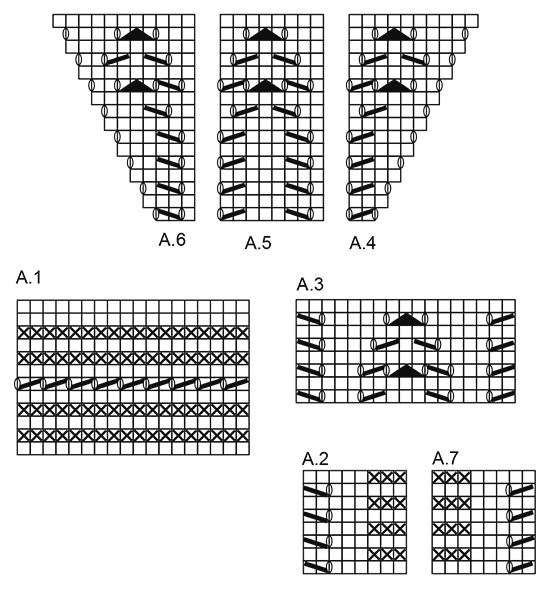 |
|||||||||||||||||||
 |
|||||||||||||||||||
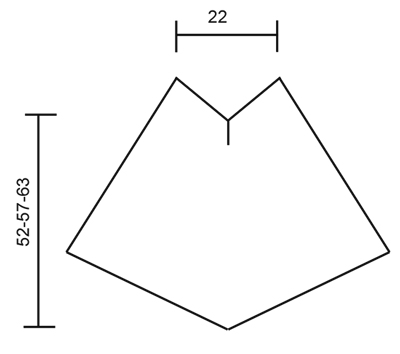 |
|||||||||||||||||||
Have you finished this pattern?Tag your pictures with #dropspattern #angelicaponcho or submit them to the #dropsfan gallery. Do you need help with this pattern?You'll find 18 tutorial videos, a Comments/Questions area and more by visiting the pattern on garnstudio.com. © 1982-2025 DROPS Design A/S. We reserve all rights. This document, including all its sub-sections, has copyrights. Read more about what you can do with our patterns at the bottom of each pattern on our site. |
|||||||||||||||||||





















































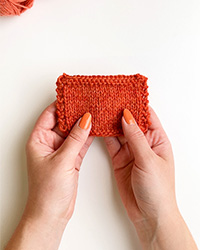
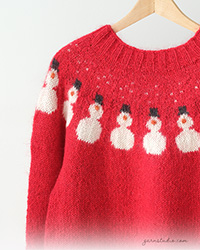

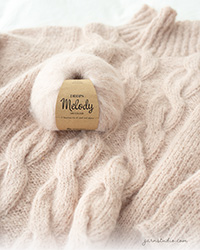
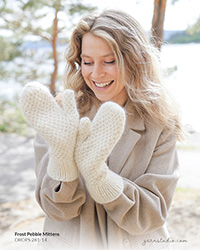

Post a comment to pattern DROPS 170-25
We would love to hear what you have to say about this pattern!
If you want to leave a question, please make sure you select the correct category in the form below, to speed up the answering process. Required fields are marked *.